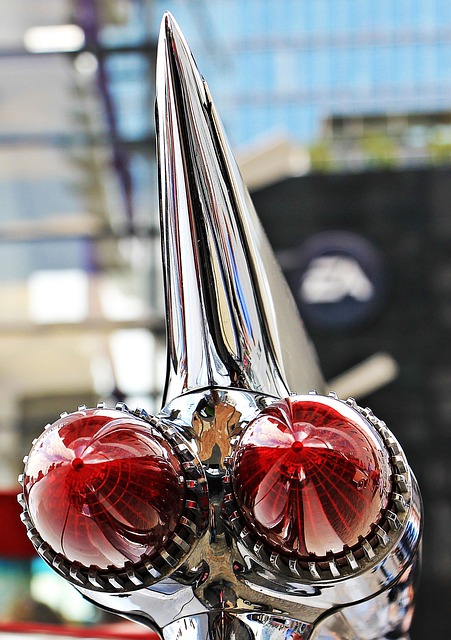Looking to register your car in California? This comprehensive guide walks you through the process, ensuring a smooth transition. From understanding state requirements to gathering essential documents and completing the DMV vin verification, we’ve got you covered. Learn how to secure your unique registration plate and all necessary papers. By following these steps, you’ll be navigating California’s car registration system like a pro in no time.
- Understand California Car Registration Requirements
- Gather Necessary Documents for DMV Visit
- Perform Vehicle Identification Number (VIN) Verification
- Complete Application and Payment at DMV
- Receive Your Registration Plate and Documents
Understand California Car Registration Requirements

Before registering your car in California, it’s crucial to understand the state’s specific requirements. The California Department of Motor Vehicles (DMV) mandates several steps for new and transferred vehicle registrations, emphasizing accurate information and proper documentation. One key component is the DV (Vehicle Identification Number) verification process, which involves confirming the vehicle’s identity through a vin inspection. This ensures that the car matches the details provided on the registration paperwork.
California residents can facilitate this vin verification process using approved methods, including mobile vin verifiers. These tools allow for convenient and efficient checks, ensuring a smoother registration experience. By following the DMV guidelines and utilizing these verification options, you can navigate the registration process with confidence, avoiding potential delays or issues down the road.
Gather Necessary Documents for DMV Visit

Before visiting your local California DMV, ensure you gather all the essential documents for a smooth registration process. One crucial piece is the Vehicle Identification Number (VIN) verification, which can be efficiently handled by using a mobile vin verifier or undergoing a mobile vin inspection. This step involves confirming the vehicle’s identity and history through its unique VIN code. Other required paperwork includes your driver’s license, proof of insurance, and possibly, if applicable, a title transfer or lien release form.
Don’t forget to bring along any additional documentation related to previous registrations, repairs, or modifications, as these might be needed for the DMV vin verification process. Having all these documents readily available will save you time and potential hassle during your visit to the California DMV.
Perform Vehicle Identification Number (VIN) Verification

Before you begin the registration process, it’s crucial to ensure your vehicle’s authenticity through a Vehicle Identification Number (VIN) verification. This step is vital as it protects you from potential fraud and ensures you’re registering the rightful owner of the car. The California DMV recommends performing this check using official methods, such as those provided by mobile vin inspectors or verifiers, who can perform a quick and accurate inspection.
By utilizing a mobile vin inspection service, you can have your vehicle’s VIN checked against state records to confirm its history and condition. This is particularly beneficial when buying a used car, as it helps uncover any hidden issues or discrepancies in ownership. With the help of these services, navigating the dmv vin verification process becomes hassle-free, ensuring a smoother registration experience for California residents.
Complete Application and Payment at DMV

To register your car in California, the first step is to complete the Application for Title and Registration (Form DV-140). This form requires detailed information about your vehicle, including its make, model, year, and unique Vehicle Identification Number (VIN). Alongside this documentation, you’ll need to provide proof of insurance and a valid driver’s license. Once all necessary documents are gathered, visit your local California Department of Motor Vehicles (DMV) office or utilize their online services for convenient registration.
During the registration process at the DMV, you’ll be required to pay the applicable fees. This includes a vehicle registration fee as well as a $25 VIN verification fee for vehicles over 10 years old. For added convenience, California offers mobile vin verification and inspection services, allowing you to complete these steps from the comfort of your home or workplace. Ensure all payments are made with approved methods to avoid any delays in processing your car’s registration.
Receive Your Registration Plate and Documents

After submitting your application for car registration at a California DMV (Department of Motor Vehicles) office or online, you’ll need to receive and review your new registration documents, including your unique Vehicle Identification Number (VIN). This process is crucial as it involves verifying the vehicle’s history through a DMV VIN verification, ensuring everything checks out before finalizing your registration.
Your registration packet will contain essential information and paperwork, such as your vehicle’s registration certificate, license plate, and any other relevant documents. Additionally, you may have the option to utilize a mobile vin verifier or conduct a vin inspection for added convenience and peace of mind. This step is vital in ensuring that your car’s registration is official and up-to-date with California’s requirements.
Registering a car in California involves understanding state requirements, gathering essential documents, completing a VIN verification process through the DMV, and submitting applications with payment. Once approved, you’ll receive your registration plate and official documents, ensuring your vehicle is legally recognized on California’s roads. Remember, accurate completion of each step, including proper DMV vin verification, is crucial for a smooth car registration experience.
